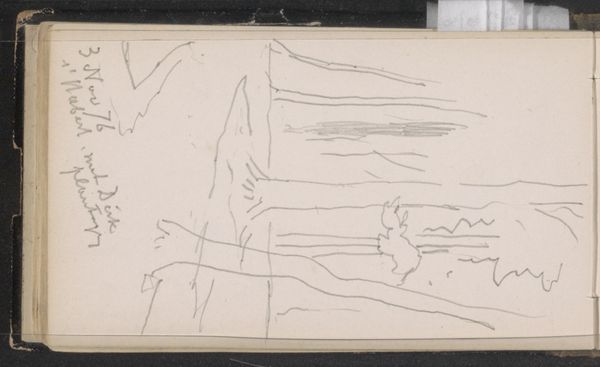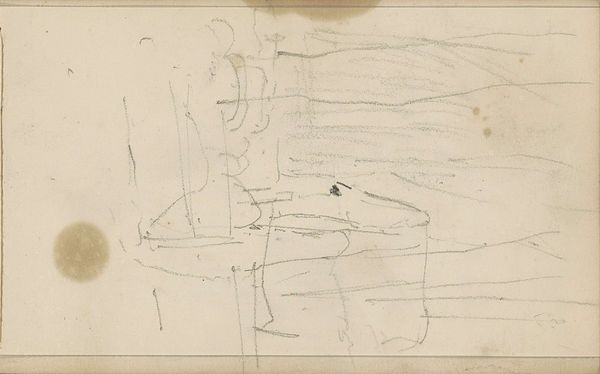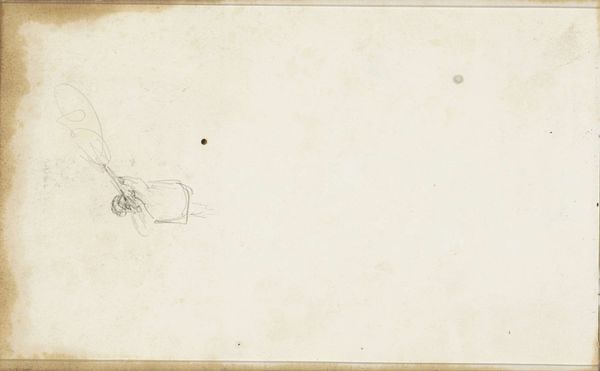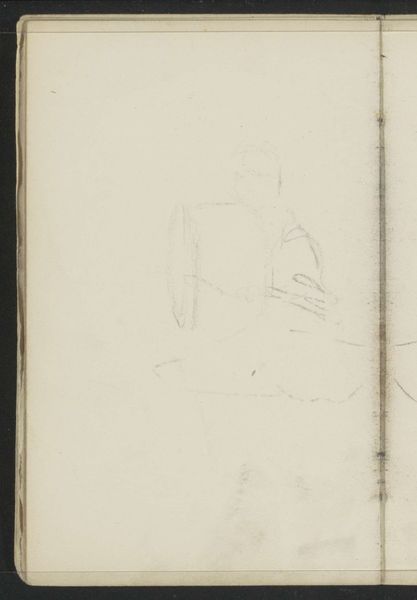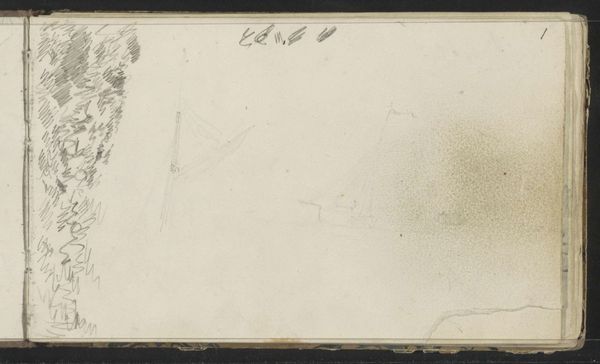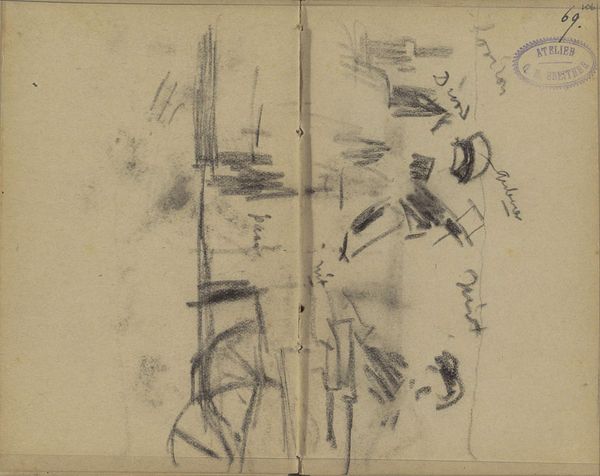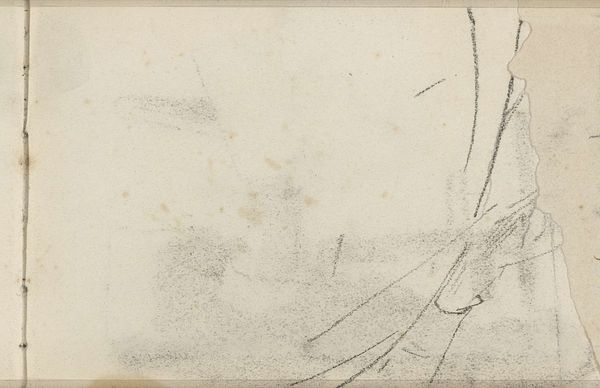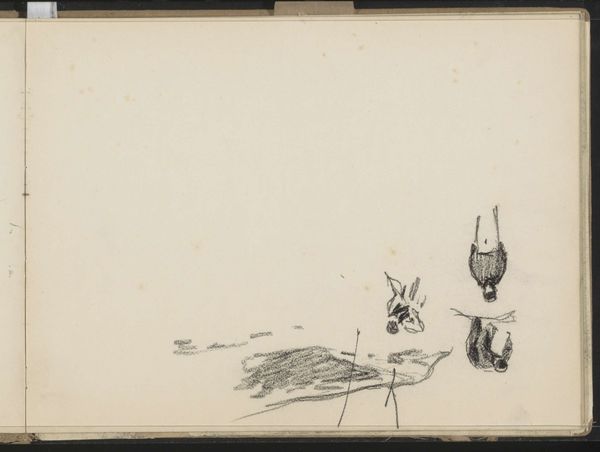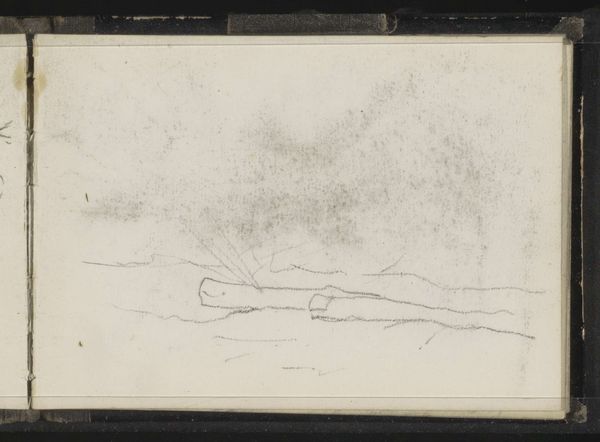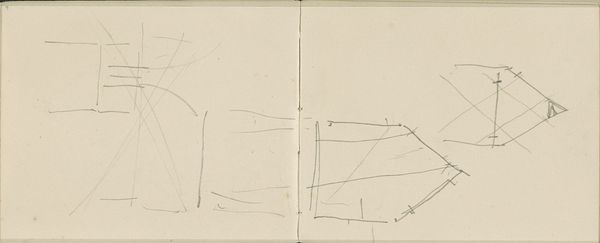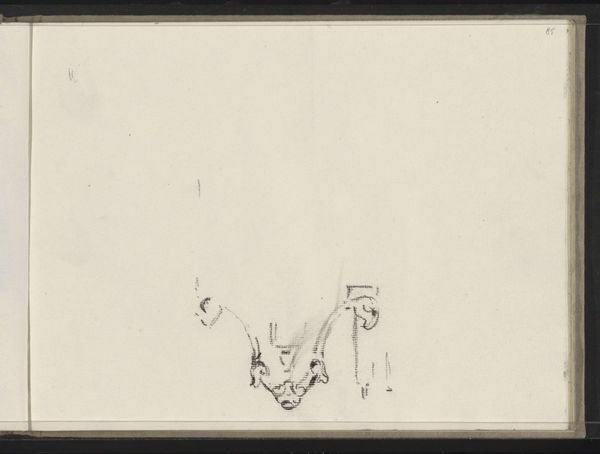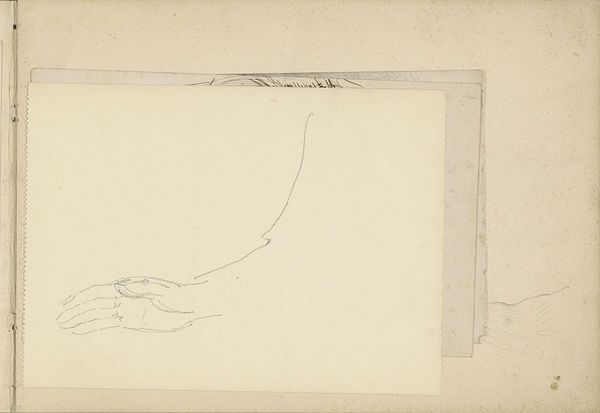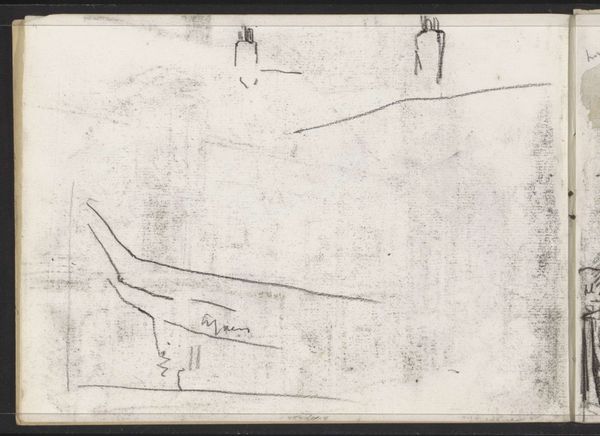
drawing, pencil
#
drawing
#
impressionism
#
landscape
#
pencil
#
realism
#
sea
Copyright: Rijks Museum: Open Domain
Curator: Anton Mauve created this pencil drawing, "Vissersboten bij de Kust" which translates to "Fishing Boats Near the Coast", sometime between 1848 and 1888. It resides here at the Rijksmuseum. Editor: The sparseness immediately strikes me. The almost ephemeral nature of pencil on paper beautifully captures the transience of the seascape. You can almost smell the sea air! Curator: It’s interesting to consider Mauve's choice of material. Pencil allows for a rapid, almost impressionistic capturing of a scene. This wasn’t some large-scale commissioned work; this was a quick sketch, probably en plein air, focused on the daily labour happening on the coast. How does the work's portability and ready medium speak to his intention as an artist? Editor: Precisely. These were likely studies done for future, more monumental oil paintings. Mauve's art career benefitted greatly from royal patronage and being part of The Hague School – artists focusing on realistic, often romanticised scenes of Dutch life for consumption by both national and international markets. So, while these look simple, they're integral to the construction of a certain national identity through art. Curator: Good point. The sketchiness also reveals Mauve's process. We see not just the finished product, but the marks of labour – the build-up of lines, the adjustments. How this differs from, say, a meticulously rendered history painting is also crucial to remember. These small sketches show the real work that's frequently overlooked. Editor: I'm also drawn to the contrast between the relatively defined boats and the abstracted background and initial sketch to the left. Did Mauve choose to highlight those specific figures? Was the blank side ready to accept additional work at a moment's notice? It's the tension between specific, situated realities and broader societal trends. These artistic depictions further solidified an image, and the cultural role these maritime workers embodied for an evolving Netherlands. Curator: Looking closely at "Vissersboten bij de Kust", we see it’s not just a representation, it is also, crucially, the evidence of material interaction – the graphite against paper, a moment in time preserved through the physical act of drawing. Editor: Yes, precisely; now I can't help but consider how that seemingly simple sketch embodies far greater historic forces.
Comments
No comments
Be the first to comment and join the conversation on the ultimate creative platform.
